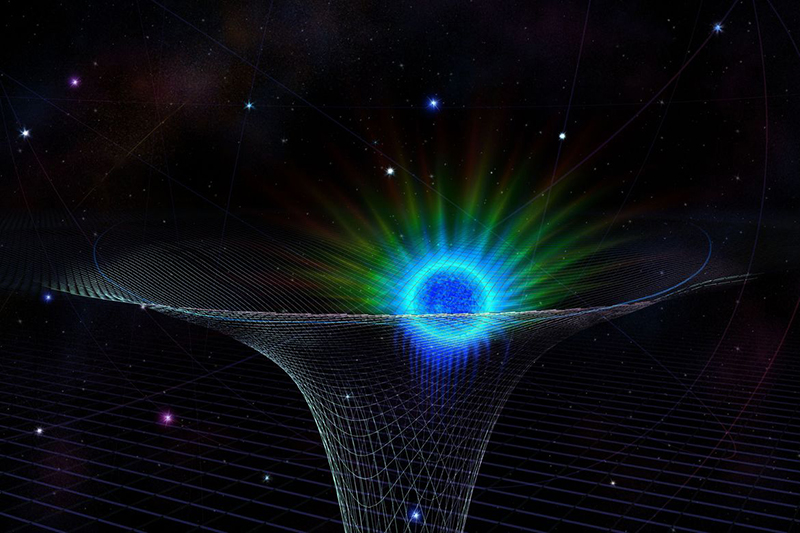A star encircling the supermassive black hole at the core of the Milky Way Galaxy has offered a new, precise test of general relativity. Put forth by German-born U.S. theoretical physicist Albert Einstein in 1915, the theory of general relativity has held up as the most comprehensive theory of gravity, continuing to pass increasingly stringent tests. In this latest test, the star—designated S0-2—has had its 16-year orbit of the black hole mapped in three dimensions, tracing the influence of the black hole's powerful gravitational field. The star's orbit fully matches Einstein's predictions, a new study in the journal Science has found. The findings bolster Einstein's monumental theory still further and, in the process, once again reveal the limitations of English physicist Isaac Newton's paradigm of gravity, which was set forth in 1687 and subsequently prevailed for more than 200 years. See also: Black hole; Galaxy; Gravity; Milky Way Galaxy; Relativity; Star

In the new paper, researchers report on having obtained spectra of S0-2 during its travel about the Milky Way's monster black hole. Spectra are the rainbow of light emitted by stars. This light bears signatures revealing a star's composition. As a star approaches and recedes from Earth’s location in space, the star’s spectra become blue- and redshifted, respectively, because of the Doppler effect. Obtaining spectra of S0-2 with the W.M. Keck Observatory in Hawaii enabled the researchers to establish distances to the star over the course of its orbit. Doing so added a third dimension to observations of S0-2's flat, two-dimensional position in the sky, helping scientists to fully visualize the star’s orbit. See also: Astronomical observatory; Doppler effect; Light; Redshift; Spectrum
A complete picture of the star's orbit allowed the researchers to not only compare S0-2's movements to those predicted by general relativity, but to also look for an effect known as gravitational redshift. This effect involves light losing energy and having its wavelength stretched out while overcoming the supermassive black hole's immensely strong gravitational field. Black holes are so named because beyond a boundary known as the event horizon, their gravity grows so intense that no light can escape, rendering the object dark. S0-2's orbit does not cross this boundary, but the star does stray close enough for its light to be affected, just as Einstein prognosticated it would. See also: Gravitational redshift





